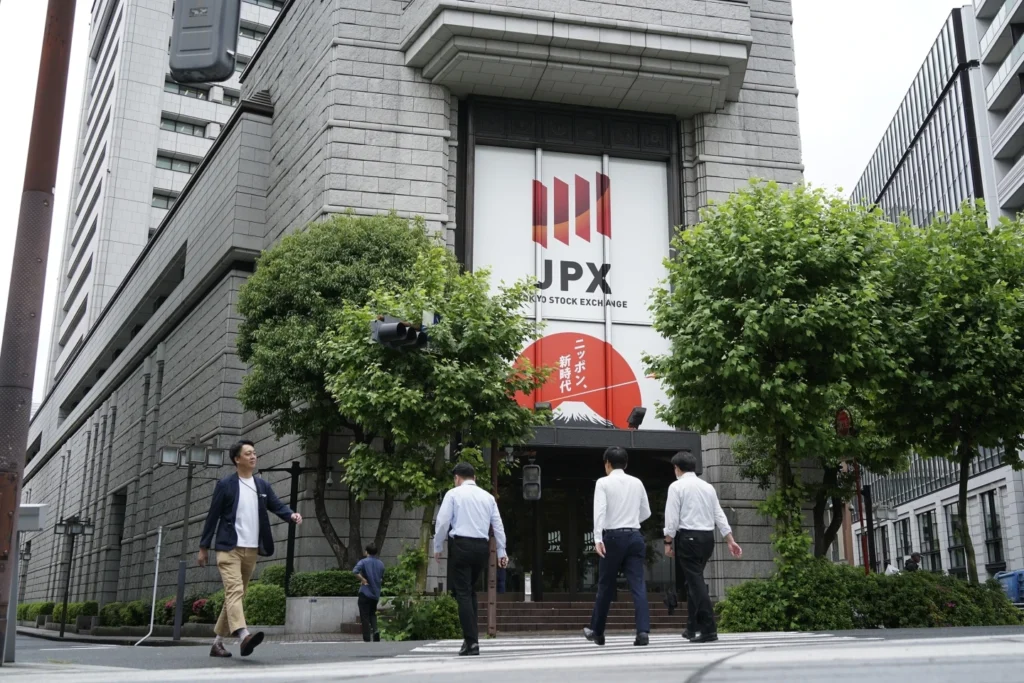Global stock markets delivered a mixed performance on Friday, influenced by Wall Street’s recent downturn. The interplay of economic data, central bank decisions, and geopolitical developments created an atmosphere of uncertainty among investors. This highlights the interconnected nature of global financial systems and the challenges posed by differing regional dynamics.
- 1 Global Stock Markets Struggle: Wall Street Sets the Tone
- 2 Global Stock Markets Struggle: European Markets React
- 3 Global Stock Markets Struggle: Asia Faces Headwinds
- 4 Global Stock Markets Struggle: Volatility and Investor Sentiment
- 5 Energy and Currency Markets
- 6 Global Stock Markets Struggle: Outlook – Navigating Uncertainty
Global Stock Markets Struggle: Wall Street Sets the Tone
The United States remains a cornerstone of global financial markets, and its performance often sets the tone for markets worldwide. On Thursday, key indices such as the S&P 500 and the Dow Jones Industrial Average closed lower, driven by several significant factors:
- Disappointing Economic Data: Recent data releases painted a mixed picture of the U.S. economy. Higher-than-expected wholesale inflation figures and increased jobless claims raised concerns about the Federal Reserve’s monetary policy trajectory. While these figures are not alarming in isolation, they add complexity to the Fed’s decisions on interest rates.
- Interest Rate Uncertainty: The Federal Reserve has embarked on a series of rate cuts to stabilize economic growth and reduce inflation. However, hotter-than-expected inflation data has tempered hopes for aggressive rate reductions, causing fluctuations in market sentiment.
- Profit-Taking by Investors: After strong rallies in 2024, some investors appear to be locking in profits, contributing to a pullback in key indices. This reflects a more cautious stance amid mixed economic signals.
Global Stock Markets Struggle: European Markets React

GLOBAL STOCK MARKET STRUGGLE
Across the Atlantic, European markets displayed a similarly mixed pattern. The European Central Bank (ECB) announced a rate cut of 25 basis points on Thursday, a move largely anticipated by investors. However, the implications of this decision vary across sectors and geographies:
- German and French Markets: Germany’s DAX index posted a modest 0.2% gain, while France’s CAC 40 edged 0.1% lower. These movements underscore the cautious optimism prevalent in Europe, as investors weigh the benefits of monetary easing against inflationary pressures.
- UK Economy Contracts: Britain’s FTSE 100 rose by 0.2%, despite reports of a 0.1% contraction in the UK economy for two consecutive months. Weakness in construction and production sectors, coupled with stagnant services, highlights ongoing challenges in the British economy.
Global Stock Markets Struggle: Asia Faces Headwinds
Asian markets experienced sharper declines, reflecting localized concerns and broader global trends. The Hang Seng Index in Hong Kong tumbled 2.1%, while China’s Shanghai Composite Index fell 2%. These declines were driven by:
- Muted Policy Signals from China: Chinese leaders concluded a two-day economic policy meeting without announcing substantial measures to stimulate growth. Although they pledged to increase government borrowing and ease credit conditions, the lack of detailed plans disappointed investors.
- Japan’s Tepid Business Sentiment: In Japan, the Nikkei 225 slipped 1% despite stronger-than-expected business sentiment among manufacturers. Broader concerns about global demand and the yen’s strength weighed on the market.
Global Stock Markets Struggle: Volatility and Investor Sentiment
Investor sentiment remains a critical driver of market trends. In times of uncertainty, markets often exhibit heightened volatility, as seen in Thursday’s Wall Street performance. Key factors influencing sentiment include:
- Economic Indicators: Inflation rates, employment figures, and GDP growth are closely monitored by investors. Recent data showing persistent inflation at the wholesale level in the U.S. added to market jitters.
- Central Bank Policies: Expectations around interest rate decisions play a pivotal role. The Federal Reserve, European Central Bank, and other major central banks are walking a tightrope between stimulating growth and curbing inflation.
- Geopolitical Risks: Ongoing trade tensions, conflicts, and other geopolitical developments inject additional layers of complexity into market dynamics.
Energy and Currency Markets
Beyond equities, movements in energy and currency markets also reflect broader economic trends. On Friday, U.S. benchmark crude oil rose slightly to $70.16 per barrel, while Brent crude gained 12 cents to $73.53 per barrel. Meanwhile, the U.S. dollar strengthened against the yen, rising to 153.25 Japanese yen, but weakened slightly against the euro.
Looking ahead, investors are closely watching central bank meetings and economic data releases for further guidance. The Federal Reserve’s decision next week will be particularly influential, as markets anticipate another rate cut to support growth.
While challenges persist, including persistent inflation and geopolitical uncertainties, some analysts remain optimistic about a soft landing for the global economy. The interplay of fiscal and monetary policies, combined with resilient consumer and business activity, will likely shape market trajectories in the coming months.
In conclusion, global markets are grappling with a confluence of factors that create both risks and opportunities. As investors adapt to an evolving economic landscape, careful analysis and strategic decision-making will be key to navigating these turbulent times.








